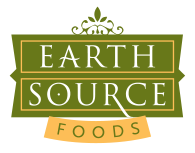Once upon a time, the wise agriculturists of Asia domesticated a wild crop called Glycine soja (or Glycine max), a legume native to central China. You know it today as soy.
While that date was previously thought to be around 1,100 BC, recent findings suggest soy – or more accurately soybeans – could have been grown in China as far back as 5,500 years ago. That’s a really long time, if you do the maths. Some even think tofu or soy milk could have been produced as early as 80AD.
China, as traditional home of the soybean – a title also claimed by Korea and Japan – has long used soy as a staple in fresh, fermented and dried food products, as well as medicines, which suggests they understood the health benefits of soy even way back in the old days.
Soy was so highly prized, in the year 2853, Chinese Emperor Shennong named soybeans one of five sacred plants – along with rice, wheat, barley and millet. By 1910, China was producing an estimated 71% of the world’s soybeans, with Manchuria, then a separate nation, producing another 16%.
Let’s just say, the Chinese really liked their soy, and still do.
It took many millennia before Asia’s best-kept secret made it across the seven seas. Europeans gained awareness of soy through the writings of a German botanist in the early 1700s. The word ‘soybean’ was first recorded in North American literature in 1804.
Early use of soy in the US was largely as a fertiliser or ‘green manure’ (similar to its initial use in China) but, soon, Americans also discovered the wonders of these little yellowish beans. Nowadays, soy is the second largest crop in cash sales in the US and the number one export crop.
Down in the Southern Hemisphere, Australians were relatively late to the soy craze with earliest known references dated around 1911:
“In that year, Deschamp of the Department of Agriculture in Victoria (Australia's southernmost state, 37° south latitude) reported that, in 1909, a quantity of soybean seed (variety unknown) was imported from the United States and grown at various locations in Victoria; they did quite well at Lilydale.”
Soy Info Center
The influx of Vietnamese into Australia in the 1970s following the Vietnam War created new markets for Asian soy foods, despite the reluctance of a largely British-descended population to adopt new eating habits. Still, soy has exponentially grown in popularity in Australia over recent decades, and is arguably no longer seen as a‘foreign’ food item.
Soy is a particularly attractive food for vegans and vegetarians due to its high protein and calcium levels. Around 37% of these pea-sized beans is top quality protein,* which means soy out-performs all other plant sources, even meat (15% to 20%). The essential amino acid balance of soy is also very high and comparable to meat. However, it is difficult to absorb these benefits from the whole bean as harvested, so some further processing – creating soy milk, tofu and the like – is required to unlock its full nutritional value.
Recent studies into soy have linked soy consumption to the prevention or improvement of conditions like diabetes, obesity, cancer, osteoporosis, cardiovascular disease, menopausal symptoms and lactose intolerance. Cholesterol reduction is another area where soy is seen to be a contributor.
As the benefits of soy have circulated far and wise, the soybean in its many guises – soy milk, tofu, soy sauce, tempeh and so on – has crossed over into the diets of everyone, not just those on dietary restrictions.
In other words, next time you see someone order a tofu burger, don’t immediately assume they are vegetarian; they could be one of the many converts who simply enjoy and respect soy for what it is.
Yes, the humble soybean has come a long way.
To be continued…
*Earth Source Foods’ 2015 tofu batches have been independently tested at 42.7% protein. Only Certified Demeter Bio-dynamic soybeans farmed in Australia are used in ESF tofu production. Click here for more information.

